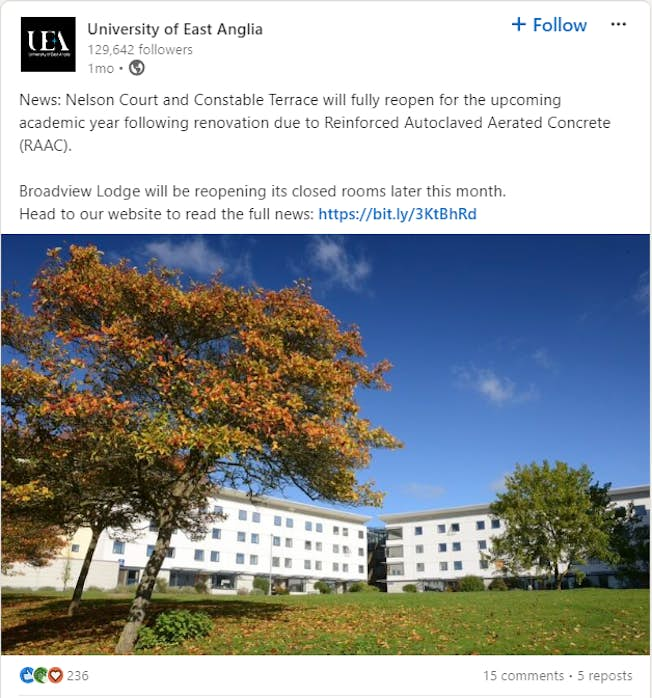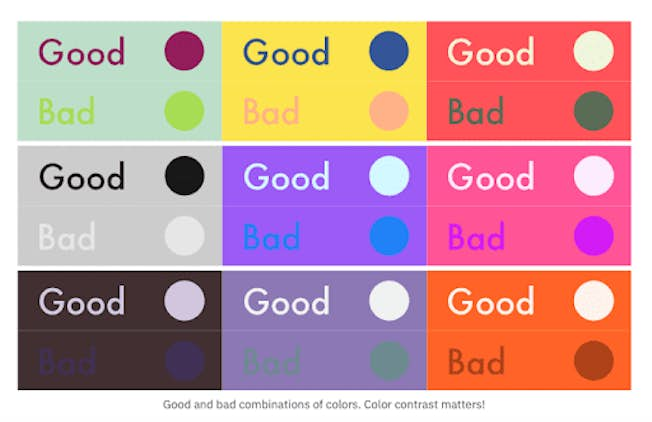As a digital marketer, it’s good to guarantee your content material reaches a variety of individuals with various wants. You are able to do this by making accessibility a central a part of your content material planning. In case your content material is accessible to extra individuals, it brings advantages to all customers.
On this publish, we cowl all it’s good to know to make sure your social media content material is accessible to all.
What’s accessibility?
What precisely is digital accessibility? And the way can you make sure that your social media content material is accessible?
Accessibility includes guaranteeing that your content material is wise, significant, and usable for as many individuals as potential. Ask your self the next questions:
- Will individuals with visible impairments get the identical info as absolutely sighted customers?
- Will individuals with neurodiverse wants perceive what you’re attempting to convey?
It’s vital to grasp that accessibility isn’t about catering to the wants of a minority of customers. It means catering to all customers.
To make your content material accessible, it is best to design and develop your inventive belongings (textual content, pictures, movies) in a manner that ensures all customers, no matter their talents or disabilities, can entry, navigate, and interact with the content material successfully. This consists of accommodating individuals with visible, auditory, cognitive, and motor impairments.
Established tips such because the Web Content Accessibility Guidelines (WCAG) present a framework for making internet content material extra accessible to a wider viewers. It’s also possible to take a look at our tips on accessibility and take heed to our podcast episode on the significance of digital accessibility for extra ideas.
Why is accessibility vital?
Accessibility is turning into an more and more vital challenge for digital entrepreneurs for a number of causes:
- It advantages everybody: Accessibility broadens the potential viewers by guaranteeing that extra individuals can entry the content material. Nonetheless, it additionally enhances the person expertise for everybody. For instance, well-structured, clear textual content will be appreciated by all customers.
- It improves search engine optimisation: Engines like google favor content material that comply with greatest practices for usability.
- It complies with laws: Adhering to accessibility requirements helps companies adjust to authorized necessities. This reduces the chance of lawsuits and penalties.
- It enhances model fame: By prioritizing accessibility, companies can construct a extra constructive model picture, foster buyer loyalty, and create a extra equitable digital atmosphere.
- It’s the proper factor to do: It promotes inclusivity. This helps to make sure that all people, together with these with completely different wants, have equal entry to info and companies. This demonstrates respect for all customers and upholds the precept that everybody deserves equal entry to info and companies.
Points to think about
When creating an accessibility plan, it’s good to contemplate customers with visible and auditory impairments, customers with mobility impairments, and neurodivergent customers (who course of info in generally completely different or unconventional methods).
- Visible and auditory impairments: In line with the World Well being Organisation (WHO), there are roughly 2.2 billion individuals world wide who’ve some type of imaginative and prescient impairment starting from gentle to extreme. That is why it’s so vital to think about alt textual content and screenreaders when crafting content material.
- Neurodiversity: Neurodiversity can be utilized to explain various considering types resembling dyslexia, dyspraxia, autism, and ADHD. No matter labels, neurodiversity is about recognising those that suppose in another way.
Take into account this social media publish. Why do you suppose it’s efficient, from an accessible perspective?

The publish is simple for learn for a number of causes:
- It has clear line spacing.
- Paragraphs are brief and to the purpose.
- The hashtags are on the finish of the publish.
- The web site hyperlink features a description (not simply ‘click on right here’)
Observe additionally that there are not any emojis or mentions within the publish. Whereas emojis and mentions are acceptable (and will be very efficient) in social media posts, too many will be distracting.
Not all social media posts are this efficient. Take into account this instance from UK meals outlet Greggs. Their authentic publish contained some uncommon emojis which have been, alas, unable to be learn appropriately by a screenreader: as an alternative they got here by way of as “blue sq.” and “yellow sq.”.

When the Royal Nationwide Institute of Blind Folks (RNIB) pointed this out to Greggs on LinkedIn, the corporate responded by committing to turning into extra alert to accessibility points in future social media content material.
Let’s contemplate some accessibility tips for social media posts in additional element.
1. Use clear, readable fonts
For social media posts, your textual content will use the platform’s default font. With some platforms, you need to use a third-party device to format the textual content (daring, italic, and daring italic). Nonetheless, keep away from over-formatting the textual content, as a result of this could change into distracting. Additionally, formatted textual content can’t be learn by a screenreader.
You should use a wide range of fonts in your pictures and as captions in your movies. Whereas it may be tempting to make use of uncommon or visually disruptive fonts,these will not be at all times simple to learn.

2. Use applicable shade patterns
Keep away from utilizing shade to convey info in your social media posts. The content material needs to be carried by the phrases, not the colours. Visually impaired and color-blind customers could not be capable to distinguish between colours.
Additionally, contemplate your shade mixtures and patterns. What textual content shade works greatest towards what background? Intention for a putting distinction that avoids wanting off-putting. On the whole keep away from light-colored textual content on a darkish background. For instance, purple on a inexperienced background is simple to learn, however mild inexperienced on a inexperienced background is tough to learn. Equally, blue on a yellow background is simple to learn, whereas pink on a yellow background is tough. The secret is to have a distinction between the font shade and the background shade, with a darkish shade on a lightweight background working greatest.

3. Present picture descriptions and alt textual content
When pictures include info not already included within the textual content, it’s good to present various (alt) textual content. It is a concise textual info used to precisely describe the visible particulars of the picture that shows inside a display screen reader. There’s no want to incorporate ‘picture of’ or ‘image of’ within the alt textual content.
If the picture consists of textual content (resembling a testimonial quote), it’s good to add the textual content to the outline. And use private attribute identifiers (eg age, gender, race) within the description when wanted.
Keep away from utilizing emojis, hyperlinks, and hashtags in alt textual content. They won’t be clickable.
Observe: Verify the platform-specific tips for including alt textual content to a picture. On LinkedIn, for instance, you click on the ALT button so as to add the alt textual content.
Professional tip: The place potential, make sure the textual content accommodates all the mandatory info, in order that the picture merely enhances or illustrates the textual content. When the picture doesn’t include any info not included within the textual content, or is solely ornamental, you don’t want to supply alt textual content.
4. Present captions and audio descriptions for movies
Movies, particularly short-form movies, are standard on social media. For all movies it is best to add captions. It’s also possible to add audio descriptions.
- Captions are a textual content model of any phrases spoken throughout the video. They will additionally embody info on tone of voice, feelings, and background sounds.
- Audio description (AD) is further commentary that explains what’s taking place on display screen. It might describe physique language, expressions, and actions.
5. Use emojis appropriately
Emojis can add visible curiosity and persona to social media posts. Ensure you perceive what every emoji means and use them appropriately. Nonetheless, keep away from overuse as a result of posts peppered with emojis can look amateurish.
Keep away from utilizing emojis as bullet factors as a result of they are going to be described by screenreaders. Additionally, put the emojis on the finish of paragraphs, and never in the course of a sentence.
Professional tip: Use emojis, not emoticons. Emojis have built-in alt textual content and will be learn by screenreaders. Emoticons, alternatively, are only a collection of punctuation marks, so the screenreader will learn every punctuation mark.
Hashtags could make your posts extra discoverable. Additionally they add visible selection to the publish and allow you to affix ongoing conversations. Nonetheless, as with mentions and emojis, use them sparingly and appropriately.
Use camel case for hashtags: Capitalize the primary letter in every phrase. Observe the distinction between #amazonshitcarshow and #AmazonsHitCarShow.
On the whole, add hashtags to the top of your publish. Solely embody them in the course of a sentence in the event that they don’t disrupt the pure circulate.
7. Use inclusive language and imagery
Whereas contemplating accessibility, it is a good suggestion to think about absolutely inclusive language that displays the preferences of your various viewers
8. Take a look at your content material
One of the simplest ways to check your content material is to think about the individual you’re writing to is sitting in entrance of you and skim what you’ve written out loud. This may show you how to decide in case your language is inclusive.
- Would you speak to them like this?
- Have you ever used any ableist language?
- Would they perceive what you’ve written?
- Can they relate to it?
- Do they know what, if something, they should do and by when?
- Have you ever eliminated jargon?
Professional tip: When sharing content material from others, don’t overlook to examine for accessibility, inclusivity, and variety. And add further descriptions if required to make sure your publish meets greatest practices
Common content material accessibility tips
Listed here are some common tips for digital advertising and marketing content material on any platform: not simply in your social media channels however in electronic mail communications, web site(s), and different promoting:
- Use clear, easy language: Keep away from jargon and sophisticated phrases. Write in a manner that’s simple for most individuals to grasp and comply with, no matter their academic background or familiarity along with your trade.
- Present various textual content (alt textual content) for pictures: Describe pictures concisely for customers who depend on display screen readers. This helps visually impaired customers perceive the content material and context of your visible parts.
- Guarantee shade distinction: Select colours which have ample distinction to make textual content simply readable towards backgrounds. This advantages customers with visible impairments, shade blindness, or these viewing content material in vibrant environments.
- Present captions and transcripts: Embrace captions for movies and transcripts for audio content material. This helps customers with auditory impairments, in addition to these in noisy or public environments.
- Keep away from flashing content material: Restrict or keep away from content material that flashes greater than thrice per second. Flashing content material can set off seizures in customers with photosensitive epilepsy.
- Take a look at with actual customers: Contain individuals with disabilities in your testing course of. Their firsthand experiences will present invaluable insights into making your content material really accessible.












